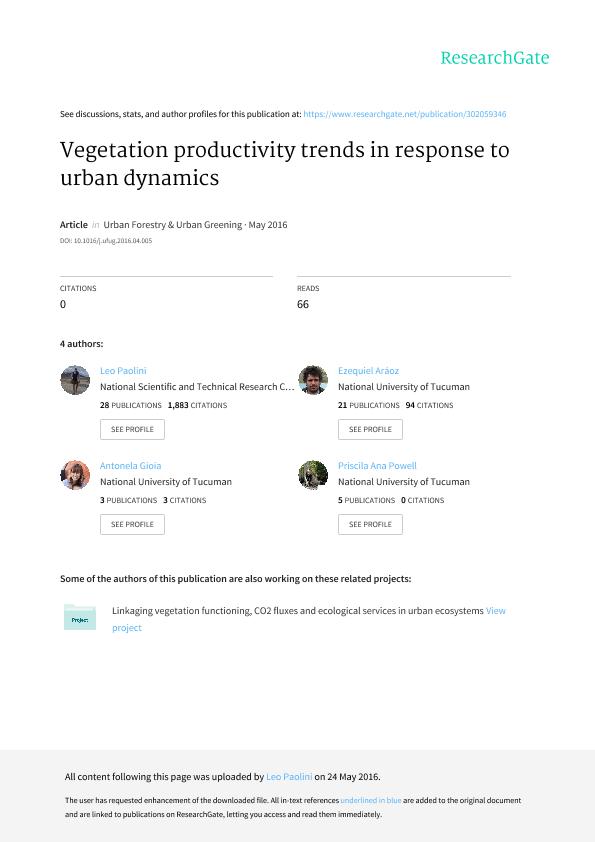Artículo
Vegetation productivity trends in response to urban dynamics
Fecha de publicación:
06/2016
Editorial:
Elsevier Gmbh
Revista:
Urban Forestry & Urban Greening
ISSN:
1618-8667
Idioma:
Inglés
Tipo de recurso:
Artículo publicado
Clasificación temática:
Resumen
Urbanization is a global phenomenon with still unknown consequences for vegetation dynamics of urban ecosystems, especially in subtropical areas of developing countries. In this paper we analyze the vegetation productivity trend associated to urban densification and urban expansion during the last decade, in twelve cities of northern Argentina. We used time series analysis of MODIS-NDVI images to reconstruct the phenological patterns to retrieve a productivity trend under three spatial classes of urban dynamics: (1) urban, (2) expansion and (3) periphery. Our results show that trends in vegetation productivity are more associated to the environmental characteristics (basal productivity and climate) than to the land cover class. The average trend in productivity in urban areas ranged between -2.54% year-1 (Metán) and -0.22% year-1 (Concepción). In contrast, the range was much tighter between classes; it was -1.37% year-1 in urban areas and -1.21% in the periphery. In this sense we found significant differences between cities, but no significant differences were observed between classes. Urban growth and urban expansion patterns found in our study suggest the system dynamics is dominated by sprawl patterns rather than by a homogeneous densification. Related to this phenomenon, our results dismissed the idea of urban expansion as the main factor affecting vegetation phenology and supported the hypothesis of regional warming as an explanation for the decrease in vegetation productivity, probably due to the decrease of water balance in arid regions.
Palabras clave:
Modis
,
Time Series Analysis
,
Urban Expansion
,
Vegetation Productivity
Archivos asociados
Licencia
Identificadores
Colecciones
Articulos(CCT - NOA SUR)
Articulos de CTRO.CIENTIFICO TECNOL.CONICET - NOA SUR
Articulos de CTRO.CIENTIFICO TECNOL.CONICET - NOA SUR
Citación
Paolini, Leonardo; Aráoz, Ezequiel; Gioia, Antonela; Powell, Priscila Ana; Vegetation productivity trends in response to urban dynamics; Elsevier Gmbh; Urban Forestry & Urban Greening; 17; 6-2016; 211-216
Compartir
Altmétricas




